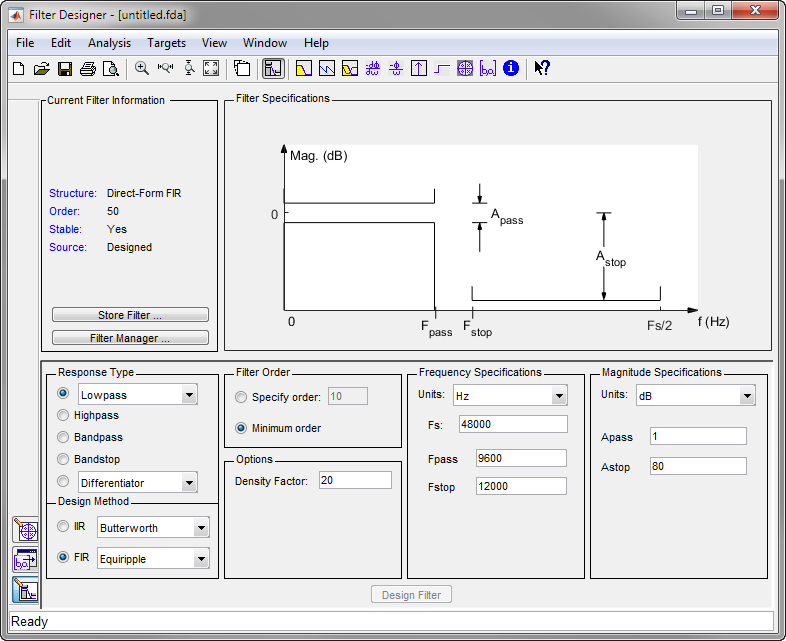

But note that it's very dangerous for a pole to wander about unit circle, as it can easily fall over it, thereby making the system unstable.įor your convenience, choose the pole radius between 0.9 and 0.99 depending on your numerical accuracy and how sharp a notch you need. Select Direct-Form FIR Transposed and click OK. In the Edit menu, select Convert Structure. Your Digital Filter Design block now represents a filter with the parameters you specified. This is a quite satisfactory notch filter.įinally lets display a much sharper notch by moving the pole closer to the zero (closer to the unit circle) by setting its radius to $r = 0.99$. Select Lowpass from the dropdown menu under Response Type and Equiripple under FIR Design Method. Click the Design Filter button at the bottom of the app to design the filter. Now this system is what can be called as a 2nd order notch filter with a pole radius of $r=0.85$ and radian frequency of $\omega = \pi/4$ radians per sample. Nice! We have reached a system whose frequency response now resembles that of a notch, but a weak one? The solution comes by recognizing that we should better put the zero on the unit circle (i.e., set its radius $r=1$) for an infinetely deep nulling at that frequency


To get rid of this non-symmetric frequency response, we shall force the impulse response to be real and the way to achieve this is to add a second zero at the complex-conjugate location resulting in the filter: Click the Design Filter button at the bottom of the app to design the filter. Note that since there is a single zero, this is a non-symmetric frequency response (due to a complex impulse response $h$). Lets see this zero on the z-plane and the corresponding frequency response magnitude for the values of $r = 0.9$ and $\phi = \pi/4$ radians: Here let me show you a simple procedure very similar to pole zero placement which will be helpful for your notch filter design.įirst, lets analyse the frequency response of a single zero and letīe a first order system with a single zero at $z = b$ where $b$ is a complex constant with a radius $r$ and phase angle $\phi$ radians i.e.,


 0 kommentar(er)
0 kommentar(er)
